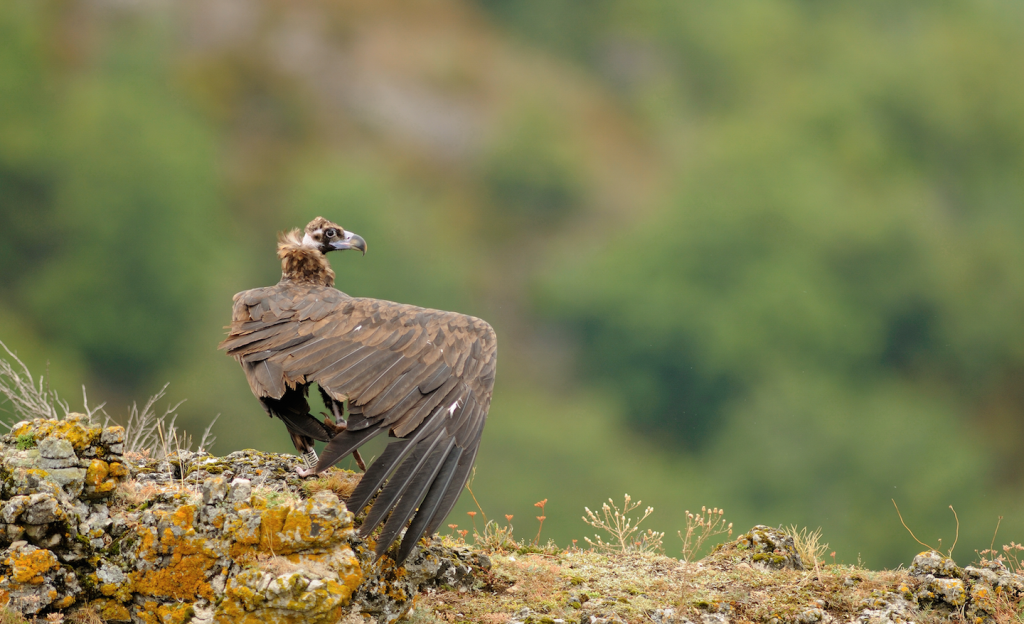The team from the LIFE project “RECOVERY OF THE POPULATIONS OF LARGE EUROPEAN VULTURES IN BULGARIA” has published their final project reports (see below), highlighting all the outputs achieved.
This project, led by Green Balkans – Stara Zagora NGO, together with the Fund for Wild Flora and Fauna, and funded by the EU LIFE project, the Frankfurt Zoological Society (FZS) and the Deutsche Bundesstiftung Umwelt (DBU), aimed to restore the Griffon Vulture population in the Balkan Mountains of Bulgaria, where it had gone extinct. For this Griffon Vultures would be imported from western Europe, accommodated in adaptation aviaries and released into the wild.
The project also aimed at exploring the feasibility of doing a black vulture reintroduction in the medium-term future, to decrease the direct and indirect threats on large vulture species in Bulgaria, and create a positive attitude to vultures through promotion of ecotourism and nature–friendly agriculture.
The VCF has contributed to this project by participating in several of the project actions, namely on the transporting of the vultures. Between 2010-2014 a total of 264 Griffon Vultures were imported to Bulgaria, mostly birds from rehabilitation centers in Spain (and also in France) – mostly young birds that got injured or lost or weak, a entered rehabilitation, and then were sent to Bulgaria rather than being released in Iberia – where the population has increased significantly. The project team also secured several captive bred birds from zoos in France, Spain, the Czech Republic, Germany and the Netherlands.
Most of these birds were released in the Central Balkan Mountains, several of them tagged with radio transmitters or GPS/GSM transmitters (their tracks can be seen at http://www.greenbalkans.org/birdsofprey/life/live.php)
By the end of the project, about 70 Griffon Vultures were constantly present at the four release areas in the Balkan Mountains. Among them are permanently attracted exogenous birds, originating from nearby natural colonies. More importantly, the species started to breed again in the area: the first breeding attempt of Griffon Vultures released within the Balkan Mountains restoration programme was reported as early as May 2012, only three years after the very first pilot releases in 2009. The
very first confirmed baby Griffon Vulture hatched into the wild appeared in 2015, five years after the start of the releases in the area of the Vrachanski Balkan. Considering the young age of most of the Griffon Vultures released within the project and the fact that they only reach sexual maturity past their fifth year, and bearing in mind the longevity and lifecycle of these birds, it is expected that the number of breeding pairs in the target areas will gradually increase with time.
The current project has also allowed the team of the Green Balkans Wildlife Rescue Centre in Stara Zagora to gain invaluable experience in the treatment, rehabilitation and breeding of vultures in captivity. The partnerships and cooperation established with national and foreign experts, institutions and organizations, the practical experience gained and lessons learnt, led Green Balkans, the Fund for Wild Flora and Fauna, and the VCF to launch the next step – restoring Black Vultures on the same mountains. As a result, a new LIFE project has been prepared, and is now starting – VULTURES RETURN BACK TO LIFE. And so the beautiful story goes on…
Photos VCF
![]() LIFE “RECOVERY OF THE POPULATIONS OF LARGE EUROPEAN VULTURES IN BULGARIA”~- Laymen´s report final Laymen´s report EN final.pdf Adobe Acrobat Document 2.8 MB Download
LIFE “RECOVERY OF THE POPULATIONS OF LARGE EUROPEAN VULTURES IN BULGARIA”~- Laymen´s report final Laymen´s report EN final.pdf Adobe Acrobat Document 2.8 MB Download





